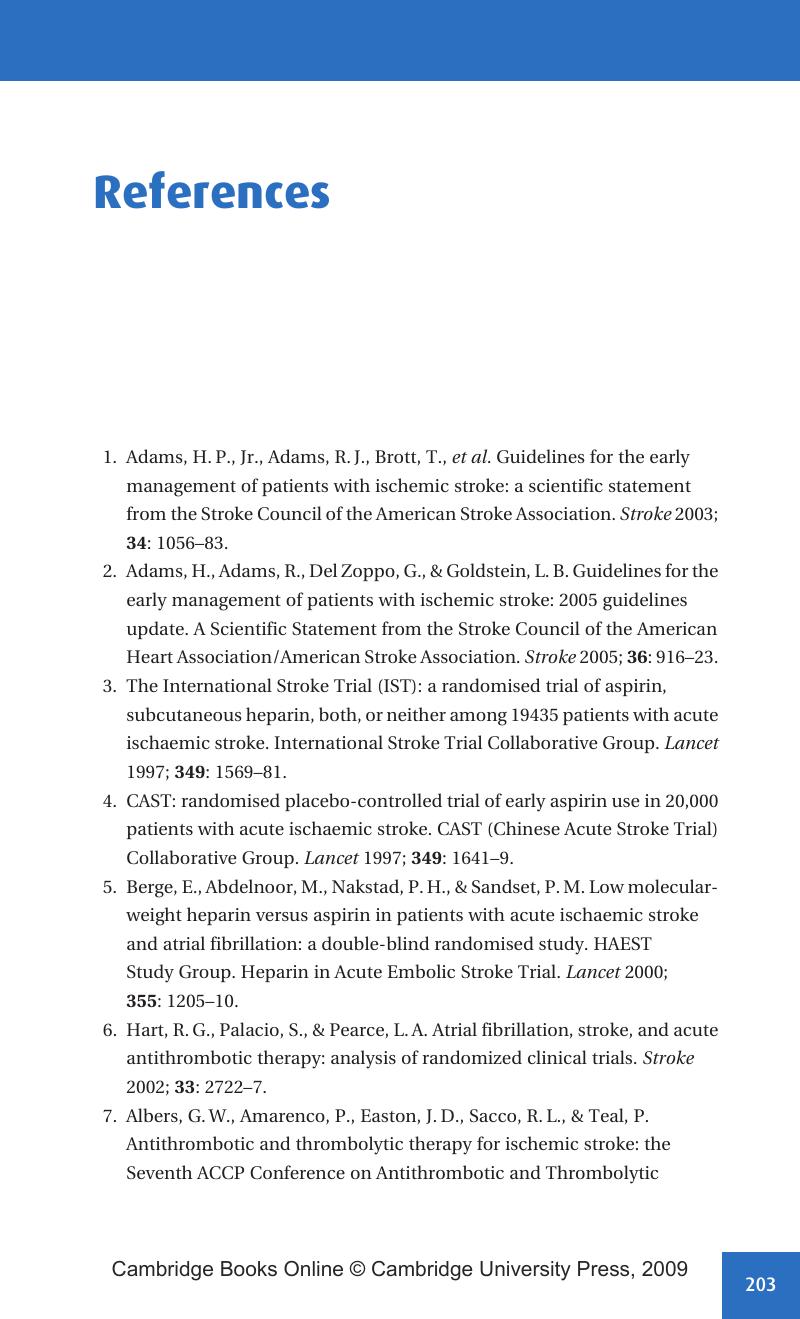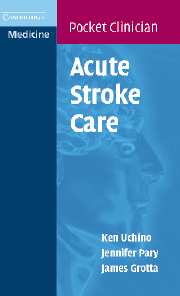Book contents
- Frontmatter
- Contents
- Preface
- List of abbreviations
- 1 Stroke in the emergency department
- 2 What to do first
- 3 Ischemic stroke
- 4 TPA protocol
- 5 Neurological deterioration in acute ischemic stroke
- 6 Ischemic stroke prevention: why we do the things we do
- 7 Transient ischemic attack (TIA)
- 8 Intracerebral hemorrhage (ICH)
- 9 Subarachnoid hemorrhage (SAH)
- 10 Organization of stroke care
- 11 Rehabilitation
- Appendix 1 Numbers and calculations
- Appendix 2 IV TPA dosing chart
- Appendix 3 Sample admission orders
- Appendix 4 Sample discharge summary
- Appendix 5 Stroke radiology
- Appendix 6 Transcranial Doppler ultrasound (TCD)
- Appendix 7 Heparin protocol
- Appendix 8 Insulin protocol
- Appendix 9 Medical complications
- Appendix 10 Brainstem syndromes
- Appendix 11 Cerebral arterial anatomy
- Appendix 12 Stroke in the young and less common stroke diagnoses
- Appendix 13 Brain death criteria
- Appendix 14 Neurological scales
- Recommended reading
- References
- References
References
Published online by Cambridge University Press: 10 October 2009
- Frontmatter
- Contents
- Preface
- List of abbreviations
- 1 Stroke in the emergency department
- 2 What to do first
- 3 Ischemic stroke
- 4 TPA protocol
- 5 Neurological deterioration in acute ischemic stroke
- 6 Ischemic stroke prevention: why we do the things we do
- 7 Transient ischemic attack (TIA)
- 8 Intracerebral hemorrhage (ICH)
- 9 Subarachnoid hemorrhage (SAH)
- 10 Organization of stroke care
- 11 Rehabilitation
- Appendix 1 Numbers and calculations
- Appendix 2 IV TPA dosing chart
- Appendix 3 Sample admission orders
- Appendix 4 Sample discharge summary
- Appendix 5 Stroke radiology
- Appendix 6 Transcranial Doppler ultrasound (TCD)
- Appendix 7 Heparin protocol
- Appendix 8 Insulin protocol
- Appendix 9 Medical complications
- Appendix 10 Brainstem syndromes
- Appendix 11 Cerebral arterial anatomy
- Appendix 12 Stroke in the young and less common stroke diagnoses
- Appendix 13 Brain death criteria
- Appendix 14 Neurological scales
- Recommended reading
- References
- References
Summary

- Type
- Chapter
- Information
- Acute Stroke CareA Manual from the University of Texas - Houston Stroke Team, pp. 203 - 213Publisher: Cambridge University PressPrint publication year: 2007



